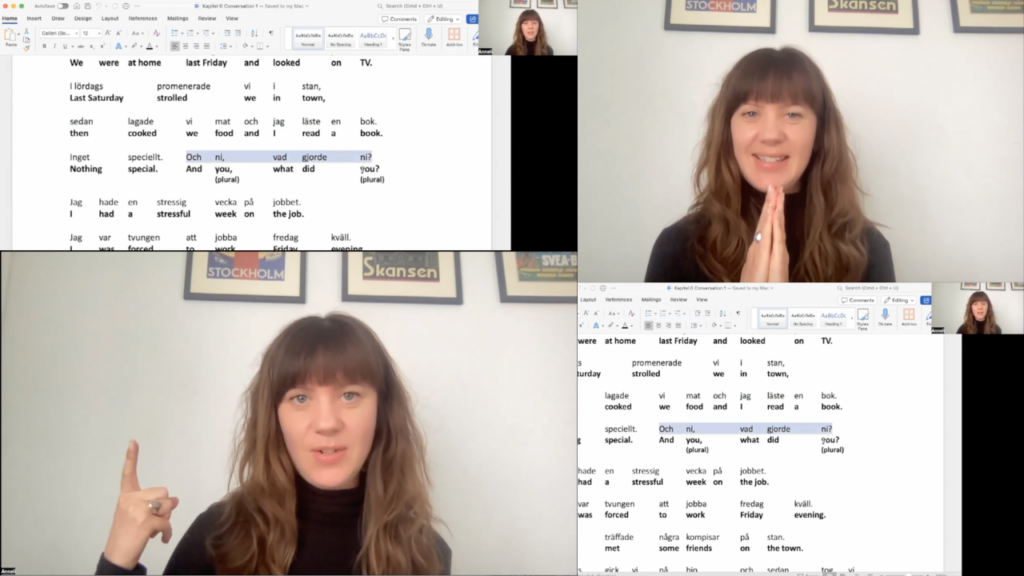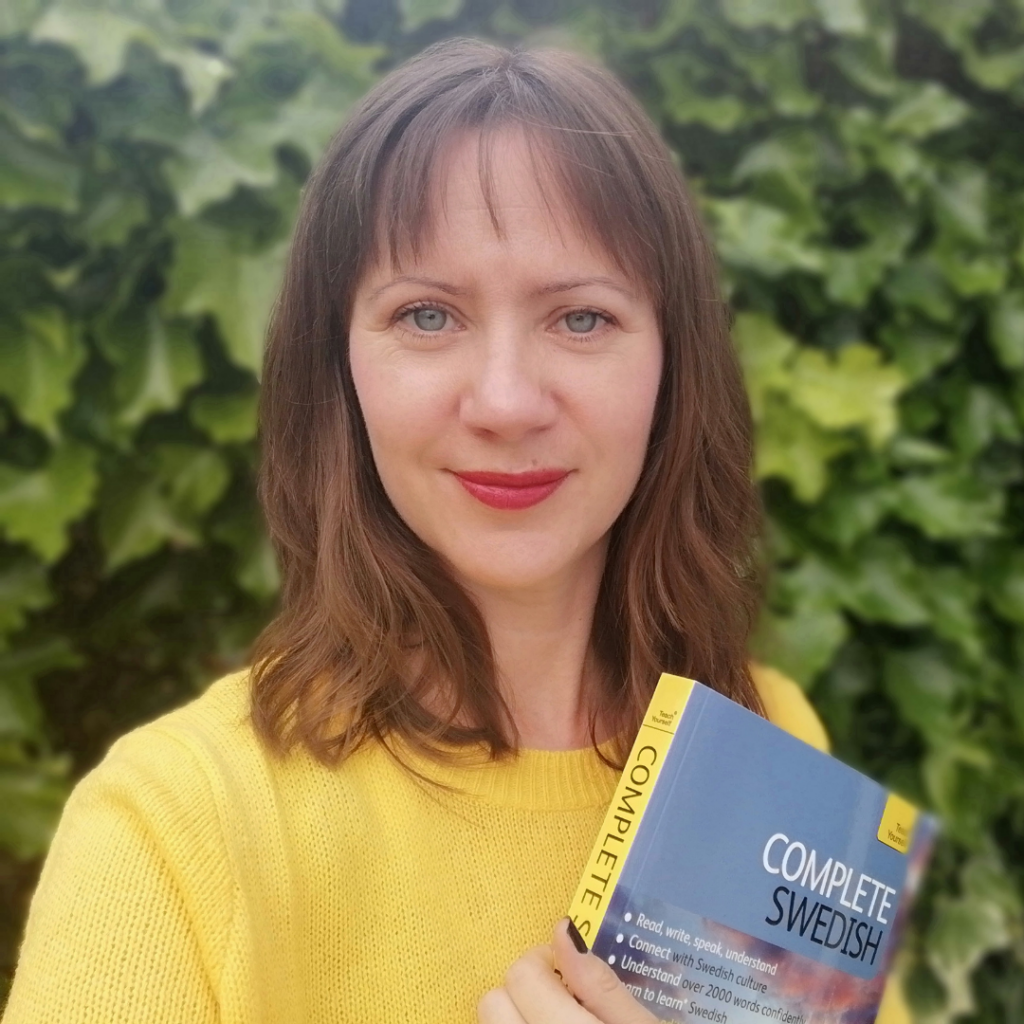You’ve been studying Swedish for a while. Maybe you’ve used Duolingo or another language app. You’re getting the hang of reading and writing in Swedish, but there’s one big problem: spoken Swedish sounds NOTHING like what you’ve learned.
You’re not alone. Many learners find it difficult to understand spoken Swedish because it sounds so different from what they read in textbooks or hear in language learning apps. This can make conversations with native speakers feel overwhelming, even after you’ve spent months (or years!) studying.
But don’t worry—this blog post will show you why spoken Swedish sounds so different and how you can train your ears to finally understand it, using the techniques I teach in my course Now Drive We.
The Difference Between Written and Spoken Swedish
Here’s the thing: Swedish, like many other languages, has a significant gap between its written and spoken forms. In written Swedish, sentences are typically more formal, and the language follows a strict grammatical structure. But when Swedes speak, they tend to shorten words, drop letters, use contractions, and speak faster.
For example, a phrase like “Nej, det är jag inte” (No, I’m not) is commonly shortened in speech to something like “Nä dee ja’nte.” If you’ve only been exposed to written Swedish, hearing this for the first time can be pretty confusing!
The casual way Swedes speak in everyday life involves reductions, slang, and expressions that aren’t commonly found in beginner textbooks. That’s why it often feels like spoken Swedish is a completely different language.
How to Train Your Ears to Understand Native Speakers
So, how do you bridge the gap between the Swedish you’re reading and writing, and the Swedish you hear in conversations?
The key is listening practice—but not just any listening. You need to practice both active listening and passive listening.
Active listening involves paying close attention to specific words, sounds, or patterns while listening to Swedish. For example, focus on how certain letters are pronounced or how the sentence structure changes in casual conversation.
Passive listening allows you to absorb the sound of the language without fully understanding it at first. This helps train your brain to recognize common sounds, rhythms, and intonations in Swedish speech, so you become more familiar with it over time.
In Now Drive We, I guide you through both types of listening exercises. You’ll listen to Swedish in various contexts—spoken slowly at first, and then at normal speed. By combining this with decoding (learning how sentences are structured), you’ll start to understand how native speakers really talk.
Decoding Swedish Pronunciation
Decoding is the secret to learning how Swedish pronunciation works. The Birkenbihl method I use in my course breaks down Swedish sentences word-for-word so you can see exactly how they’re structured and pronounced.
For instance, let’s take the sentence “Vad gör du?” (What are you doing?). Through decoding, you’ll learn that “gör” is pronounced more like “yör,” and you’ll understand why the word sounds different when spoken. As you go through these exercises, you’ll start to recognise patterns in pronunciation, which will make it easier to follow conversations.
The reduction of words is another common feature of spoken Swedish that can throw learners off. By working through decoding exercises, you’ll get used to hearing and understanding these reductions, so you won’t be caught off guard when Swedes shorten or combine words in fast speech.

Mastering Swedish with Now Drive We
My course, Now Drive We, is designed to help you understand both written and spoken Swedish. You’ll learn how to decode Swedish sentences, improve your listening comprehension, and gradually become more comfortable with how Swedish is spoken in real-life conversations.
The course provides smart flashcards, active and passive listening exercises, and regular opportunities for you to ask questions and get feedback through live Q&A sessions. With this support, you’ll find it easier to bridge the gap between reading Swedish and understanding native speakers.
You won’t have to struggle alone. You’ll have all the tools and guidance you need to make sense of spoken Swedish.
Summary
If you’ve been frustrated by the differences between written and spoken Swedish, you’re not alone. The good news is, there are proven techniques you can use to improve your listening skills and finally understand native speakers.
In Now Drive We, I’ll help you master both the written and spoken forms of Swedish, so you can navigate conversations with confidence and ease. Start your journey today, and you’ll soon be surprised at how much easier it becomes to understand Swedish the way it’s really spoken.

